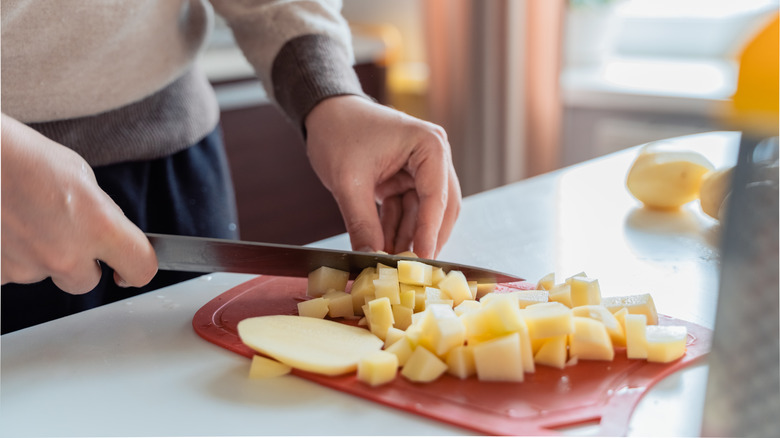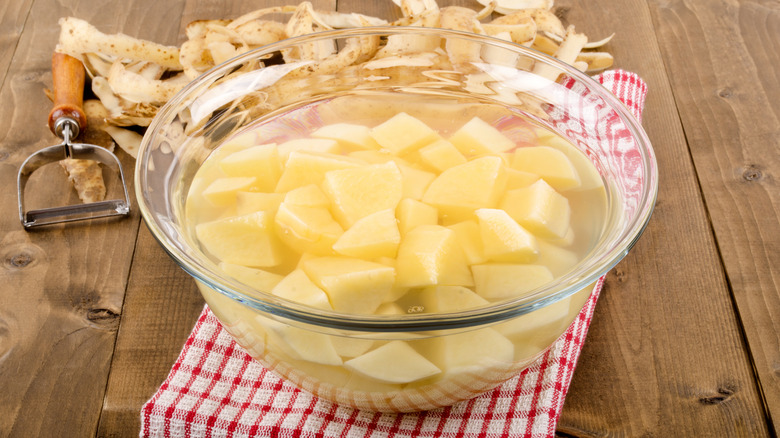Why Do Cut Potatoes Turn Pink?
Have you ever prepped potatoes and noticed that after they're peeled and cut and you leave them out, for even a short amount of time, they can start to turn pink? In the same way that avocados, apples, and pears gradually start to brown after you slice into them, potatoes — whether russet, yellow, red, or purple — are also subject to a change in interior color. So why does this happen?
According to The Kitchn, it's simply a chemical reaction. When you cut into a potato, you're also cutting into its cell walls. In doing so, you're exposing the potato's phenols and enzymes to oxygen in the air, resulting in a chemical reaction that manifests itself in the form of a pink hue.
If you are using a dull potato peeler and knife, you will cause even more damage to the potato's cell walls, inducing an even greater reaction.
How to prevent potatoes from turning pink
There's nothing wrong with eating potatoes that are slightly discolored due to a little too much oxygen exposure, but a pink potato isn't exactly as appetizing as a normal colored one. If you can't use the potatoes right away, or are chopping up an extra large batch of potatoes, The Spruce Eats recommends soaking them in a bowl of cold water. This prevents discoloration by keeping the potatoes cool and by creating a barrier against oxygen, allowing them to stay fresh overnight.
For potatoes that have already turned pink, water won't do much, but the good news is that you can still reverse the effects of oxidation. To do so, The Spruce Eats explains you'll need to mix the potatoes with ascorbic acid or vitamin C powder, vinegar, or lemon juice. The acidity changes the pH level, thereby restoring the potato to its original color. If you don't mind eating pink potatoes, however, you can always skip all the extra steps and go straight to cooking.

